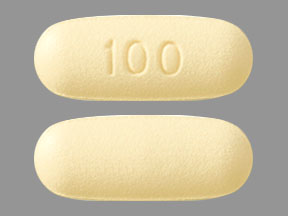Posaconazole Disease Interactions
There are 6 disease interactions with posaconazole.
- Hereditary fructose intolerance
- QT prolongation
- Diarrhea/vomiting
- Electrolyte disturbances
- Hepatotoxicity
- Renal dysfunction
Posaconazole (applies to posaconazole) hereditary fructose intolerance
Major Potential Hazard, Moderate plausibility.
Posaconazole powder for delayed-release oral suspension is contraindicated in patients with known/suspected hereditary fructose intolerance (HFI). This formulation contains sorbitol (inactive ingredient) and may precipitate a metabolic crisis that may include (but is not limited to) life-threatening hypoglycemia, hypophosphatemia, lactic acidosis, and hepatic failure in patients with HFI. Careful history of HFI symptoms (nausea, vomiting, abdominal pain) with sorbitol/fructose/sucrose exposure should be obtained before administration of posaconazole powder for delayed-release oral suspension because a diagnosis of HFI may not yet be established in pediatric patients.
References
- (2006) "Product Information. Noxafil (posaconazole)." Schering-Plough Corporation
Azole antifungals (applies to posaconazole) QT prolongation
Moderate Potential Hazard, Moderate plausibility. Applicable conditions: Arrhythmias
Some azole antifungals have been associated with prolongation of the QT interval on the ECG. Rare cases of QT prolongation and torsade de pointes have been reported during postmarketing experience; such reports usually involved seriously ill patients with multiple confounding risk factors, such as structural heart disease, electrolyte abnormalities, and concomitant medications. These drugs should be administered with caution to patients with potentially proarrhythmic conditions. Concomitant use with other medications that have potential to increase the risk of cardiotoxicity should be avoided.
References
- (2001) "Product Information. Nizoral (ketoconazole)." Janssen Pharmaceuticals, 1992
- (2002) "Product Information. Diflucan (fluconazole)." Roerig Division
- (2002) "Product Information. Sporanox (itraconazole)." Janssen Pharmaceuticals
- (2022) "Product Information. Sporanox (itraconazole)." Janssen Pharmaceuticals
- (2002) "Product Information. VFEND (voriconazole)." Pfizer U.S. Pharmaceuticals
- (2006) "Product Information. Noxafil (posaconazole)." Schering-Plough Corporation
- (2021) "Product Information. Tolsura (itraconazole)." Mayne Pharma Inc
Posaconazole (applies to posaconazole) diarrhea/vomiting
Moderate Potential Hazard, Moderate plausibility.
Patients with severe diarrhea or vomiting should be monitored closely for breakthrough fungal infections when using posaconazole delayed-release tablets, oral suspension, or powder for delayed-release oral suspension.
References
- (2006) "Product Information. Noxafil (posaconazole)." Schering-Plough Corporation
Posaconazole (applies to posaconazole) electrolyte disturbances
Moderate Potential Hazard, Moderate plausibility. Applicable conditions: Electrolyte Abnormalities
Electrolyte disturbances (especially those involving potassium, magnesium, or calcium levels) should be monitored and corrected as needed before and during posaconazole therapy.
References
- (2006) "Product Information. Noxafil (posaconazole)." Schering-Plough Corporation
Posaconazole (applies to posaconazole) hepatotoxicity
Moderate Potential Hazard, Moderate plausibility. Applicable conditions: Liver Disease
Posaconazole has been associated with hepatic reactions (e.g., mild to moderate elevations in ALT, AST, alkaline phosphatase, total bilirubin, and/or clinical hepatitis); cases of more severe hepatic reactions (including cholestasis or hepatic failure including deaths) have been reported during therapy in patients with serious underlying medical conditions (e.g., hematologic malignancy), primarily in patients receiving 800 mg/day. Liver tests should be assessed at the start of and during posaconazole therapy; patients with abnormal liver tests during therapy should be monitored for the development of more severe hepatic injury. Patient management should include laboratory evaluation of hepatic function (especially liver tests and bilirubin). Discontinuation of therapy should be considered if clinical signs/symptoms consistent with liver disease develop that may be due to posaconazole.
No dose adjustment of posaconazole is necessary in patients with mild to severe liver dysfunction (Child-Pugh A, B, or C). However, posaconazole delayed-release tablets, powder for delayed-release oral suspension, and injection have not been specifically studied; caution is recommended.
References
- (2006) "Product Information. Noxafil (posaconazole)." Schering-Plough Corporation
Posaconazole (applies to posaconazole) renal dysfunction
Moderate Potential Hazard, Moderate plausibility.
Posaconazole injection should be avoided in patients with moderate or severe renal dysfunction (estimated glomerular filtration rate [eGFR] less than 50 mL/min) unless an assessment of the risks and benefits justifies its use. Since the IV vehicle, betadex sulfobutyl ether sodium (SBECD), is expected to accumulate in patients with moderate or severe renal dysfunction using the injection, serum creatinine levels should be closely monitored in these patients, and if increases occur, switching to oral posaconazole therapy should be considered. No dose adjustment is needed for oral dosing in patients with mild to severe renal dysfunction; however, patients with severe renal dysfunction (eGFR less than 20 mL/min/1.73 m2) should be closely monitored for breakthrough fungal infections due to variability in exposure with posaconazole delayed-release tablets, oral suspension, and powder for delayed-release oral suspension.
References
- (2006) "Product Information. Noxafil (posaconazole)." Schering-Plough Corporation
Posaconazole drug interactions
There are 575 drug interactions with posaconazole.
Posaconazole alcohol/food interactions
There is 1 alcohol/food interaction with posaconazole.
More about posaconazole
- posaconazole consumer information
- Check interactions
- Compare alternatives
- Pricing & coupons
- Reviews (2)
- Drug images
- Side effects
- Dosage information
- During pregnancy
- Drug class: azole antifungals
- En español
Related treatment guides
Drug Interaction Classification
| Highly clinically significant. Avoid combinations; the risk of the interaction outweighs the benefit. | |
| Moderately clinically significant. Usually avoid combinations; use it only under special circumstances. | |
| Minimally clinically significant. Minimize risk; assess risk and consider an alternative drug, take steps to circumvent the interaction risk and/or institute a monitoring plan. | |
| No interaction information available. |
Further information
Always consult your healthcare provider to ensure the information displayed on this page applies to your personal circumstances.


